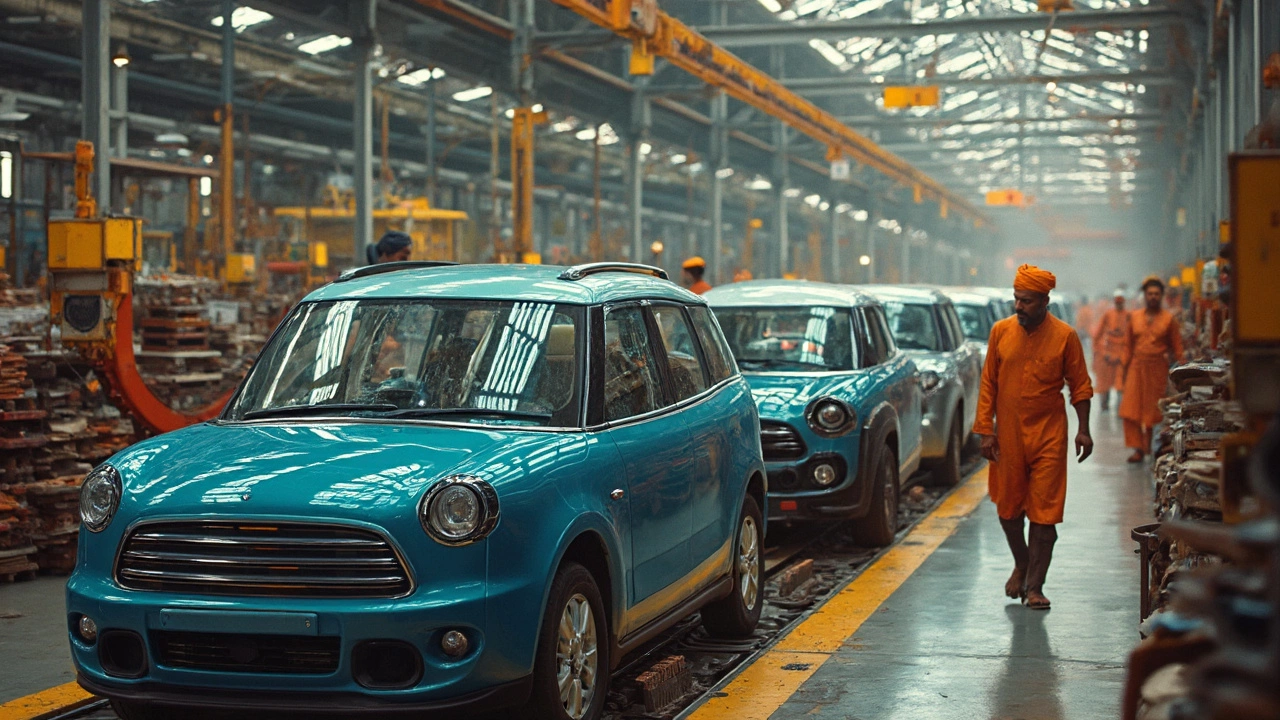If you've ever thought about buying a car in India, you've probably noticed that prices seem pretty steep. But why is that the case? Let's break it down.
First off, there's the tax tangle that includes various levies and cesses which hike up the price even before the car hits the road. You've got GST, road tax, and sometimes additional cesses based on the car's make and model.
Then, think about import duties. While many cars in India are manufactured locally, a bunch of components are sourced from overseas. Those parts come with import duties that add to the production cost, inevitably bumping up the sale price.
The Tax Tangle
When it comes to car prices, taxes are a major player in why Indian cars carry hefty price tags. Let's dive into the details.
First on the list is the Goods and Services Tax, or GST. Cars in India are slapped with a GST rate of 18% to 28%, depending on the model. Luxury cars or larger SUVs usually max out at the 28% rate, which automatically cranks up the cost of your dream car.
On top of GST, there's the road tax, which varies by state. Each state sets its own rates, calculated on the ex-showroom price. For example, while Karnataka levies up to 18% for new private vehicles, states like Maharashtra may charge differently. Therefore, where you register your car can make a big difference.
Additional Cesses and Levies
Beyond standard taxes, additional cesses like the Compensation Cess can range from 1% to 22%, based on the car type. Dusting off the BMW or Audi dream? Expect to fork out more due to this.
How Taxes Comply with Global Standards
It's worth noting that all these taxes, though extensive, try to align with global emission norms and manufacturing practices, pivoting India towards better environmental standards.
Here's how taxes break down in a nutshell:
- GST: 18% to 28%
- Road Tax: Varies by state
- Compensation Cess: 1% to 22%
Factoring in these taxes gives us a sense of why buying a car in India feels like a splurge, but it also contextualizes how the government aims to balance revenue with infrastructure and environmental demands.
Import Duties Impact
Here's the deal with import duties when it comes to Indian cars. While a lot of cars and components are manufactured locally, a significant chunk still needs to be imported. This includes everything from high-tech engine parts to innovative electronic systems, and even some luxury fittings.
Each of these imports faces tariffs and duties. For some components, the import duty can be as high as 100%. Yep, you heard that right! These duties are intended to encourage local manufacturing but often end up boosting the costs of finished cars.
Commonly Affected Components
Cars loaded with foreign features aren't just paying for the gadgets. They're hit with extra charges, passed down to consumers. Some typical imported items include:
- Advanced electronic systems
- Luxury interiors
- Hybrid and electric drive units
Every time a manufacturer imports these, it adds up, increasing the ultimate price tag.
Luxury Brands and Import Dependency
Luxury brands, in particular, rely heavily on imports. Brands like BMW and Mercedes-Benz import most of their car parts, meaning their buyers are paying hefty duties. Even domestic brands offering high-end versions grapple with similar issues due to their dependency on imported parts.
Here's a little data to wrap your head around:
| Component | Approx. Import Duty |
|---|---|
| Engine Parts | 60% |
| Electronic Modules | 50% |
| Luxury Interiors | 100% |
So, the next time you're wondering why your dream car's price seems so bloated, remember, the import duties play a major part in jacking up those costs. It's a big balancing act between encouraging local production and dealing with the reality of modern car building.

Demand for Modern Features
It's no secret that modern cars are loaded with cool gadgets and features. Indian car buyers expect the same sort of perks as those in other countries, which ramps up the cost. From touchscreens to advanced safety systems, these add-ons are a huge part of what's driving car prices north.
High-Tech Expectations
Today's cars aren't just about getting from point A to B. People want features like Apple CarPlay, Android Auto, and touch controls that make driving more enjoyable. But keeping up with tech trends means more research, development, and ultimately, cost.
Additionally, safety features like multiple airbags, anti-lock braking systems, and backup cameras aren't just options anymore—they're must-haves. Consumers won't settle for anything less, which pushes manufacturers to include these features as standard, affecting the price tag.
The Premium Effect
Even in the budget segment, cars are increasingly being offered with premium features like sunroofs, climate control, and leather seats, in response to the local demand for that premium feel. These features elevate the perceived quality and comfort level of cars, but they also contribute to the sticker shock.
Car manufacturers also have to adapt these features specifically for the Indian market, considering factors such as climate and road conditions, which adds another layer of expense.
The Wrap-Up
Ultimately, the demand for modern features significantly impacts the price of Indian cars. As consumers continue to seek more technology-packed and comfortable rides, automakers have little choice but to load up on costly but desired features. This is part of why many folks find themselves shelling out more than expected when looking to buy a vehicle in the Indian market.
Supply Chain Costs
When it comes to the price of Indian cars, supply chain costs pack a punch. A lot happens from the moment raw materials are sourced until the final product reaches the showroom.
Car manufacturing in India often involves a complex web of suppliers. Many parts, like engines or electronics, are either imported or involve multiple logistics steps to move from one part of the country to another. This chain is still catching up with the efficiencies found in more developed markets.
Fueling Costs of Logistics
Transportation of parts is another hefty element. Fuel prices in India are quite volatile, and they significantly affect transportation costs. A truck moving components across states can have its costs doubled or halved, depending on diesel prices. You can bet these changes end up in the price tag.
Warehousing Challenges
Then there’s storage. Warehousing is crucial to managing parts inventory. But here's the catch: when demand forecasts are off, excess inventory can build up, and that’s a costly problem to manage. Efficient warehousing can save money, but inefficiencies can definitely contribute to higher car prices.
Table: Component Imports
| Component | Source Country | Import Duty |
|---|---|---|
| Electronic Control Units | Germany | 15% |
| Turbochargers | Japan | 20% |
This table shows a couple of critical components and their respective import duties. As you can expect, these costs get added up, affecting the final price of vehicles.
All in all, understanding these supply chain intricacies helps paint a bigger picture of why car prices stay on the steeper side in India. And it's a reminder of the complexity behind just getting a car to sit on that dealership floor.
